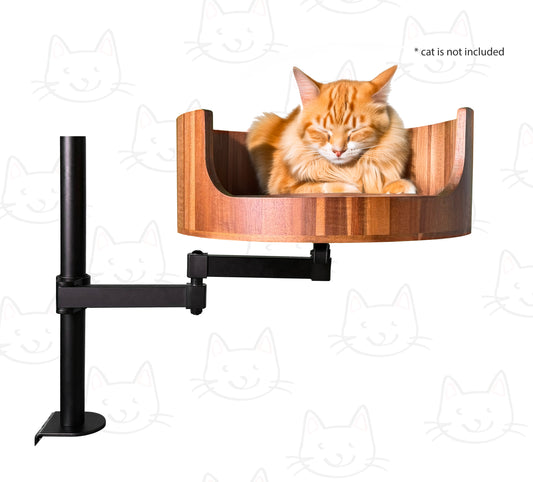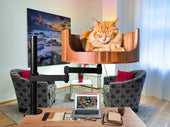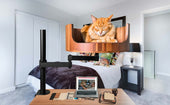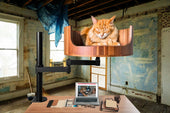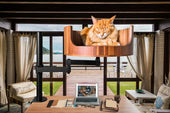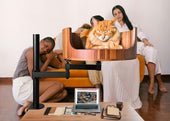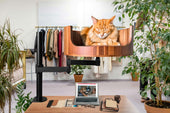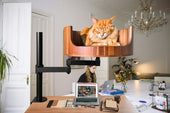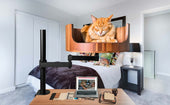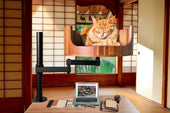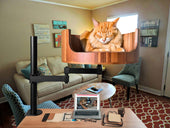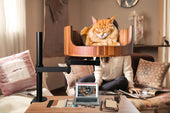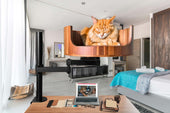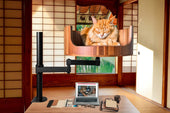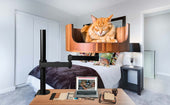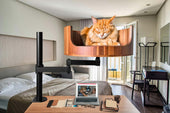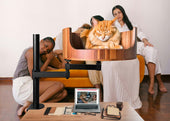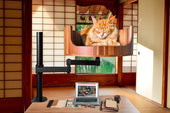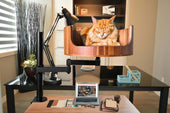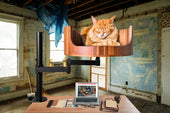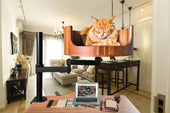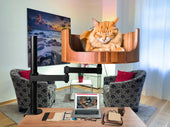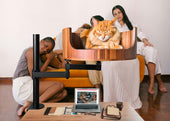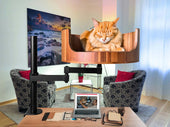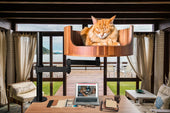
My Cat Vomit: Understanding the Causes and Solutions
Share
If you own a cat, chances are you've encountered the not-so-pleasant sight of cat vomit at some point. While it can be concerning and frustrating to deal with, understanding the causes and finding solutions can help alleviate the problem. In this article, we will delve into the various reasons why cats vomit and explore effective ways to prevent and manage this common issue.
From hairballs to dietary indiscretions, there are a multitude of reasons why cats vomit. By understanding the underlying causes, cat owners can take proactive steps to address the issue and improve their feline friend's overall well-being. Whether it's adjusting their diet, providing more mentally stimulating activities, or seeking veterinary care, there are solutions available to help reduce the frequency of cat vomit and ensure a happier, healthier pet. So, if you've been dealing with your cat's vomit and hoping to find lasting solutions, read on to learn more about how to tackle this common yet manageable problem.
1. Determining the cause of your cat's vomiting is crucial, as it can range from hairballs to food sensitivities.
2. Regular grooming can help reduce hairballs and prevent excessive shedding, which can lead to vomiting.
3. Adjusting your cat's diet and feeding schedule can help address potential food allergies or sensitivities.
4. Providing a comfortable and stress-free environment for your cat can help prevent vomiting caused by anxiety or other emotional factors.
5. Consulting with a veterinarian is recommended if your cat's vomiting persists or is accompanied by other concerning symptoms.
Causes of Cat Vomiting
Cat vomiting can be caused by various factors including hairballs, dietary issues, overeating, fast-paced eating, underlying health conditions, and stress. Hairballs are one of the most common reasons for cat vomiting, as cats groom themselves by licking their fur, which can lead to the ingestion of hair. Dietary issues such as food allergies or intolerances can also trigger vomiting in cats. Additionally, overeating or eating too quickly can cause stomach upset and ultimately lead to vomiting. Underlying health conditions such as kidney disease, pancreatitis, or gastrointestinal issues can also result in vomiting. Lastly, stress or anxiety can manifest physically in cats through vomiting, especially during significant changes or events in their environment.
Treating Cat Vomiting
To address cat vomiting, it is essential to first identify the underlying cause. For hairballs, regular grooming to minimize shedding and providing a hairball remedy can help prevent vomiting. Adjusting the cat's diet to eliminate potential allergens or irritants can alleviate dietary-related vomiting. Feeding smaller meals more frequently or using puzzle feeders to slow down eating can prevent vomiting due to overeating or fast-paced eating. In cases of underlying health conditions, it is crucial to consult with a veterinarian for proper diagnosis and treatment. Managing stress through environmental enrichment, pheromone diffusers, or calming supplements can also reduce vomiting episodes in cats.
Preventing Cat Vomiting
Preventative measures can help minimize the frequency of cat vomiting. Regular grooming to reduce hair ingestion and hairball formation is key in preventing vomiting. Maintaining a consistent and balanced diet tailored to the cat's specific nutritional needs can prevent dietary-related vomiting. Monitoring portion sizes and feeding schedules to prevent overeating can also aid in preventing vomiting episodes. Providing a stress-free and enriching environment for the cat can help reduce anxiety-induced vomiting. Regular veterinary check-ups can help catch any underlying health issues early on and prevent vomiting associated with these conditions. By implementing these preventative measures, cat owners can help keep their feline companions healthy and vomiting-free.
Frequently Asked Questions
How can the Desk Cat Nest help with my cat's vomiting issues?
The Desk Cat Nest provides a comfortable and safe space for your cat to relax and rest. By creating a cozy environment for your cat, it can help reduce stress and anxiety, which are common triggers for vomiting in cats.
Is the Desk Cat Nest easy to clean?
Yes, the Desk Cat Nest is designed to be easily cleaned. The removable cushion can be machine washed, and the outer fabric can be spot cleaned with a damp cloth. This makes it easy to keep the nest clean and fresh for your cat.
Will my cat like using the Desk Cat Nest?
While every cat is different, many cats enjoy having a designated space to call their own. The cozy and enclosed design of the Desk Cat Nest can appeal to cats who prefer privacy and security when resting. Introducing the nest gradually and offering treats or toys inside can help encourage your cat to use it.
Can the Desk Cat Nest help prevent my cat from vomiting entirely?
While the Desk Cat Nest can provide a comfortable space for your cat to relax and potentially reduce stress, it may not completely prevent vomiting in all cases. It is important to consult with your veterinarian to address the underlying causes of your cat's vomiting and to develop a comprehensive plan for managing their health.
In conclusion, the Desk Cat Bed is a valuable choice for cat owners looking to address their cat's vomit issues. By providing a comfortable and secure resting place for your feline friend, the Desk Cat Bed can help reduce stress and anxiety in cats, which may in turn decrease the frequency of vomiting episodes. Additionally, the elevated design of the Desk Cat Bed can help promote better digestion and reduce the likelihood of hairballs, further mitigating the risk of vomiting. Overall, investing in a Desk Cat Bed is a smart choice for cat owners looking to improve their pet's overall well-being and minimize the inconvenience of cleaning up vomit.

